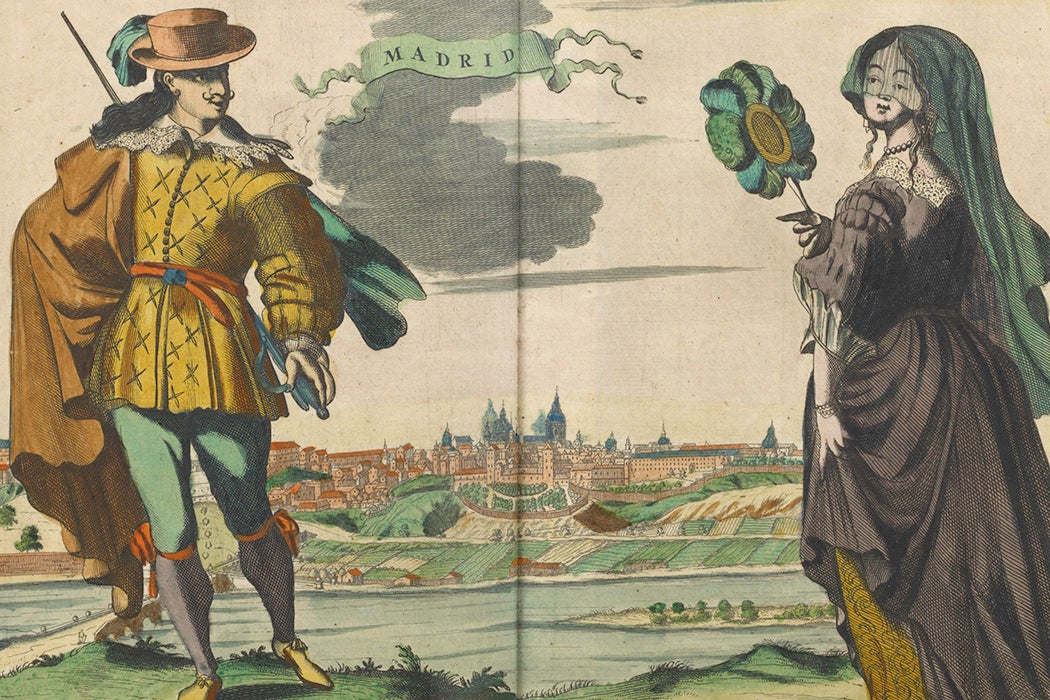In the sixteenth century, a fashion trend in the urban centers of Spain and its American colonies scandalized authorities and fascinated artists: Women were going about in public with their faces covered. Hispanic studies scholar Laura R. Bass and historian Amanda Wunder examine the uproar, looking at evidence from Seville and Madrid as well as Lima, Peru.
In all these cities, Bass and Wunder write, the fashion of veiling was known as the tapado, and the women who adopted it as tapadas. While there were a variety of garments that women might use to cover their faces, they most often used a long, black cloak that covered the full head and body. These mantles were appropriate for women of all ages and classes, including unmarried women, matrons, widows, and nuns. They could be made cheaply or expensively, out of a range of fabrics.
From the perspective of authorities, mantles were fine. The trouble came when a woman used the fabric in a way that could disguise her identity. She could accomplish this either by draping it over her face or wrapping it so that only a single eye was visible. Bass and Wunder write that this second style, known as the tapado de medio ojo “was seen by contemporaries as being spectacularly seductive.” It was also a simple effect to achieve—a woman could become a tapada in an instant and uncover herself again just as easily.
The Spanish style of veiling may have been modeled on longstanding Islamic tradition, though this isn’t entirely clear. Certainly, those who complained about it in the sixteenth century viewed it as a distinctly modern problem. In 1523, writer Juan Luis Vives warned that European women used veils for reasons quite opposed to traditional ideas of female modesty, to “remain unknown and unseen, while they recognize others.”
Bass and Wunder write that this complaint was tied up in worries about urbanization, which allowed people to take on new identities, scrambled signs of social status, and created new spaces where men and women interacted. In Seville, a port city radically transformed by the pillage of the Americas, this was a particular issue. With many of the city’s men traveling abroad, one Italian visitor in 1525 described Seville as being “in the hands of women.”
Weekly Newsletter
Connected with urban anonymity, the tapado allowed a woman to walk in public without being recognized by her neighbors or even her husband, tying the style to infidelity and the transgression of status lines.
In 1586, Spanish legislators petitioned King Philip II to ban women from covering their faces in public, warning that doing so caused “great offenses to God and notable harm to the republic.” The king did so, but it was a nearly impossible law to enforce. Women continued to veil well into the seventeenth century. While it’s hard to find records showing how they perceived this choice themselves, Bass and Wunder write that representations of tapadas in plays and illustrations portray “a clearly recognizable type: seductive, defiant, and disruptive to the social order.”
Support JSTOR Daily! Join our membership program on Patreon today.







